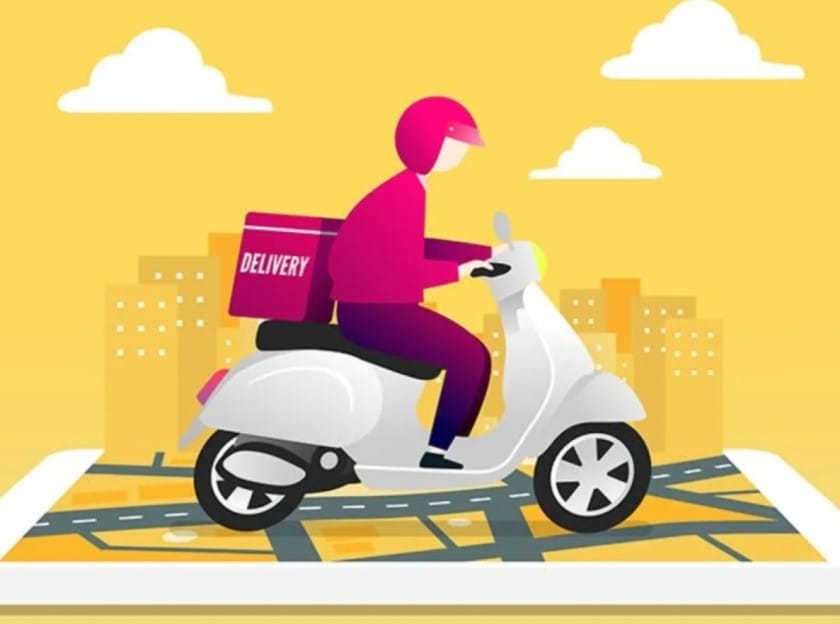India’s e-commerce landscape is undergoing a dramatic transformation, and at the forefront of this evolution is the burgeoning quick commerce sector. Fueled by a need for speed and convenience, quick commerce, which promises deliveries in under 30 minutes, has exploded in popularity, fundamentally changing how Indian consumers shop. According to a recent report by Bain & Company and Flipkart, this dynamic sector accounted for a staggering two-thirds of all e-grocery orders last year, witnessing an almost fivefold increase in its total market share to an impressive $6-7 billion since 2022. This remarkable growth underscores the rapid adoption of quick commerce, with the sector now representing a significant one-tenth of the total e-retail spending in India in 2024.
The Rocketing Rise of Instant Gratification
The report highlights that the “dramatic rise of quick commerce” has been a defining characteristic of India’s e-retail market in the past couple of years. Dominated by key players like Blinkit, Zepto, and Swiggy Instamart, this sector has tapped into a deep-seated consumer desire for immediate gratification. With over 20 million online shoppers annually and a workforce exceeding 400,000, the quick commerce industry is not just a passing trend; it’s becoming a crucial engine driving the overall growth of India’s e-commerce ecosystem. The study projects a robust annual growth rate of over 40% for the sector through 2030, indicating that this rapid expansion is set to continue as companies broaden their offerings across various product categories, geographical locations, and consumer demographics.
Beyond Groceries: A Widening Horizon
While Quick Commerce’s initial focus was heavily on groceries, the sector is rapidly diversifying. The report reveals that 15-20% of the Gross Merchandise Value (GMV) now originates from categories beyond groceries, including general merchandise, electronics, mobile phones, and even apparel. This expansion signifies a growing consumer trust and reliance on quick commerce platforms for a wider range of needs, moving beyond just urgent grocery runs. India’s unique urban landscape, characterized by high population density, the strategic placement of low-rent “dark stores” and a readily available gig workforce, has provided a fertile ground for quick commerce to scale at an unprecedented pace compared to other global markets.
Navigating Challenges and Intensifying Competition
Despite the impressive growth trajectory, the quick commerce sector is not without its challenges. Expanding beyond the top six metropolitan cities, which currently account for the majority of sales, remains a significant hurdle. The report suggests that achieving long-term profitability will necessitate platforms optimizing their supply chains, improving margins, and adapting their business models to cater to the unique demands of smaller cities. Furthermore, the sector’s exponential growth has attracted significant competition. Established players like Flipkart (with Flipkart Minutes), Myntra (with M-Now), BigBasket (with BB Now), and Amazon (with Amazon Tez) have all recently launched their own quick delivery services, intensifying the battle for market share against existing leaders like Blinkit and Zepto.
Sustainability Concerns Amidst the Boom
While the future of quick commerce appears bright, some analysts have raised concerns about the long-term sustainability of the current growth rate. A recent report by Blume Ventures pointed toward potential challenges related to unit economics and overall profitability. The Flipkart-Bain report also acknowledges the broader economic context, noting a slowdown in overall e-retail growth in 2024 due to private consumption stress. However, it anticipates a recovery by the festive season of 2025, with e-retail projected to achieve over 18% annual growth in the coming six years.
Looking Ahead: A Transformative Force in Indian Retail
By 2030, India’s e-retail market is projected to reach a staggering $170-$190 billion in GMV, with online spending accounting for one in ten retail dollars. Quick commerce is poised to play a pivotal role in achieving this milestone, solidifying India’s position as one of the world’s largest and most dynamic digital commerce markets. While challenges remain, the rapid adoption and expansion of quick commerce highlight a fundamental shift in consumer behavior and expectations, signaling a future where speed and convenience will be paramount in the Indian retail landscape.
Subscribe:
Stay connected with the latest updates, exclusive insights, and curated content by subscribing to my newsletter.

